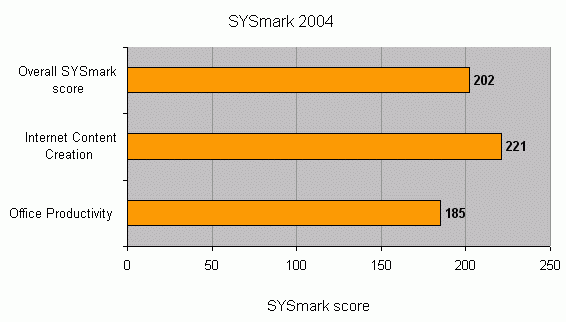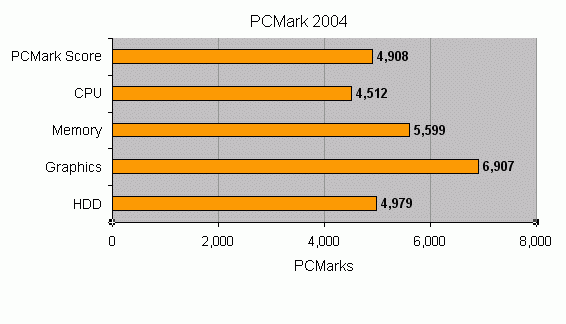Biostar iDEQ 330P Barebone System Review
Biostar iDEQ 330P Barebone System
Biostar's original iDEQ gave Shuttle something to think about. With its innovative design the 330p is set to do the same, winning Biostar more fans in the process.

Verdict
Key Specifications
- Review Price: £248.00
After a long wait following our first sighting of it at CeBIT, the next generation iDEQ from Biostar finally turned up in our office last week. The good news is that the 330P was definitely worth waiting for. Not only is this the first Socket 939 small form factor (SFF) barebone to arrive at TrustedReviews, but it’s also the first one based on the nVidia nForce4 chipset. This is a combination that has been eagerly awaited by many SFF users out there. Although Shuttle was first out with a barebone based on the nForce4 chipset, Biostar might be able to steal some of the limelight away with the 330P.
I’m not sure if the new design will be to everyone’s liking, as it is not as stylish as Shuttles SN25. The grille across the front adds to the idiosyncratic looks, but there is a good reason for it to be there. The main chassis construction is shared across the 300-series of iDEQ’s and features a shark mouth type opening mechanism. This is where the grille comes into play as behind the front is a 92mm fan. This might seem odd, but the iDEQ 330P is very BTX inspired. As such the CPU heatsink doesn’t feature a fan as the front fan cools the heatsink.
But it’s when you open the iDEQ 330P that you realise how many hours the Biostar engineers have put in to construct the chassis. As with the iDEQ 200 series the sides are separated from the top, which make it easy to get into the case. Once the sides are off there are two latches at the bottom that need to be pushed apart to enable the front of the machine to be lifted upwards, this giving you access to the innards of the iDEQ 330P. I can honestly say that I have not come across another SFF system that is this easy to assemble.
It’s not quite perfect though, as the hard drive caddies could be easier to remove. A quick release catch would be preferable to the thumb screws as they’re fairly stiff to pull out. The CPU heatsink is even easier to remove than in the older iDEQ 200 machines due to the simple fact that there is more space to get your hands in to reach it. The memory modules are equally easy to get to and with everything you need to access in the front of the case, things couldn’t get much simpler.
As the iDEQ 330P is based on the nForce4 chipset, PCI Express is part of the package and a x16 slot is ready to accept most graphics cards bar the mighty 6800 Ultras due to the positioning of the x16 slot. I tested the iDEQ 330P with an nVidia GeForce 6800GT card. There is one problem with using high-end graphics cards in the iDEQ 330P; there’s no PCI Express power connector present. You can of course use an adaptor but it’s hardly an elegant solution and it has to trail across the CPU heatsink. Biostar could easily have routed a cable that would have been in exactly the right position inside the case, and they should do this on the next revision.
A single PCI slot is also available for any additional expansion cards you might want to fit to your computer. Added to this is a mini-PCI slot hidden under a small flap at the bottom of the case, which allows for an optional Wi-Fi network card upgrade. The antenna is fitted to the rear of the case and Biostar has fitted a wire between the mini-PCI slots and the rear of the chassis. There is a further slot on the left hand side for an DOM (disk on module) card. This is for an optional upgrade that will add a Linux based media playback application to the iDEQ 300 range.
In the centre of the case, seated immediately behind the CPU heatsink is an air duct and a reversed blower fan – if that is a correct term – which sucks the hot air out of the rear of the case. The air duct has openings on each side to suck hot air away from the graphics card and from the space below the second hard drive caddy. The 300W PSU also has a small fan.
The 5.25in drive bay is at the top of the chassis, much in line with every other SFF case on the market. Due to the pre-routed cables it’s actually not that easy to fit a drive as the screws have to be fitted in-between the cables. The front flap might hide the look of your beige optical drive, but the way its designed means that it can get caught on the drive tray when it’s closing.
Biostar hasn’t managed to get around this issue but it has solved the problem of lining up the eject button. This is a common problem on several SFF barebones, as the eject button on optical drives are not always in the same place. Biostar has by far the best solution for this. A small track has been fitted on the inside of the case where the front mounted eject button applies pressure. This then has an adjustable slider which can be moved all the way down to the middle of the optical drive. As a result, I can’t see any optical drive that won’t work with the iDEQ 330P.
The built-in card reader handles Compact Flash Type I/II and Microdrives, SD, MMC, SmartMedia and MemoryStick and has a USB 2.0 interface. The front also sports an optical S/PDIF input, a microphone and headphone socket, two USB 2.0 ports and a six pin FireWire port. Interestingly, the front of the iDEQ 330P has an infrared window, although at time of writing, Biostar UK couldn’t confirm if this was for IrDA or for an optional remote control.
The rear of the case features two PS/2 ports, four USB 2.0 ports, a six pin FireWire port, an RJ45 connector for the onboard Gigabit Ethernet controller, two serial ports, optical S/PDIF output and five audio connectors. The audio connectors provides for 7.1-channel sound courtesy of an AC97 Realtek controller. The line-in port can be re-configured for the additional outputs and there is also a rear mounted microphone connector.
One thing that could and should be improved upon is the way Biostar deals with the power distribution to the hard drives. There is a single Molex connector routed from the PSU to a location close by the hard drives, to this a splitter is connected that has two Moles connectors as well as two SATA power connectors. This makes it quite messy around the hard drives, which is a shame since all the other cables are so neat. Although, the iDEQ 330P is pre-wired for SATA you can easily replace the SATA cable with an IDE cable. However, as the two drives will be placed horizontally side by side it will be quite awkward to connect up via IDE.
The iDEQ 330P isn’t perfect but Biostar had definitely brought something new to the SFF barebone market. It’s never been easier to assemble one of these dinky machines; a great leap forward. But performance matters as always and I don’t think anyone will be disappointed by the iDEQ 330P. With an overall SYSMark 2004 score of 202 this is a very competent little machine and the PCMark 2004 score of 4908 backs this up.
Price wise Biostar beats the Shuttle SN25, not by much. Admittedly, the external design of the SN25 is much more appealing but as I have yet to test one I can’t say if it’s better or worse than the iDEQ 330P. Until I do, the iDEQ 330P is my first choice for a Socket-939 SFF system.
”’Verdict”’
The iDEQ 330P is amazingly easy to assemble, offers a rich feature set and good performance to boot. It’s just a shame that Biostar didn’t spend some of its R&D money on a design company, as good external design always seems to win over great engineering.
(table:features)


Trusted Score
Score in detail
-
Value 7
-
Performance 8

